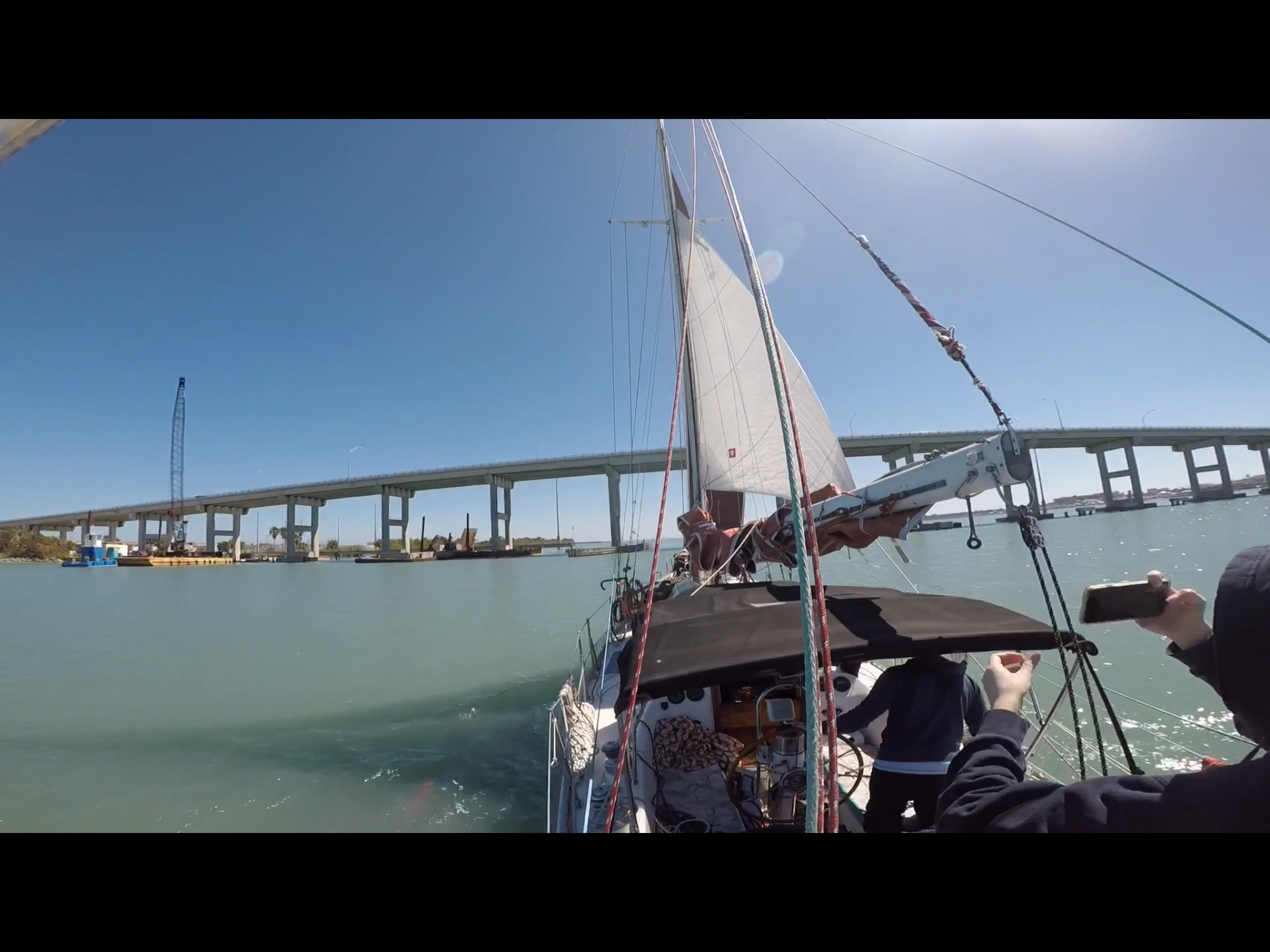Storm sails are small and very strong sails that are flown in high winds. While the sails themselves are very strong, there is another aspect of the sails that adds to the survival of the storm without damage to the yacht: where the sails fly.
When a mast breaks during a storm, it almost always breaks off at the first spreader. This means that the spar above the spreader will buckle and break, leaving you with a shortened mast and a broken rig.
What you can learn from this disaster is that the section of the spar above the spreaders is not as strong as the section below the spreaders. It is not a matter of strength of the spar being weaker above the spreader as the spar is the same size and strength over its entire length, its a matter of how the rigging is setup.
The lowers, which attach below the first spreader do not need a spreader to reach the mast at a good angle (minimum angle for the stay to approach the mast is 12 degrees) without any guidance. The run from chainplate to mast is the ideal angle. The run from chainplate to cap shroud is not as lucky, and the angle would be very small. This is why a spreader is needed to hold the stay outboard, so that it can then turn in towards the mast at an angle of no less than 12 degrees.
The mast is only supported at a few points on a yacht, and these points are the areas where the stays attach. Your first unsupported length is from the deck to the first spreader. The second unsupported length is from the first spreader to the next set of stays. On a single spreader rig, the next supported section is the mast head. On a multiple spreader rig, it is the next spreader.
The strongest unsupported section of the spar is the first section, from deck to spreader. Therefore, when loads are high and failure occurs, it occurs above this point, causing the mast to buckle at the first spreader.
So, flying full sail in a storm is not only bad because you are applying too much strain to the sails, rigging, and yacht, but also because you are applying strain in the wrong areas. Full sail means that the mast is being loaded all the way to the top! The loads it will be subjected to are mind boggling!
Reefing not only reduces the sail area to decrease the force on the yacht, but it also lowers the sail area, concentrating the loads to the first unsupported section of the spar. Storm sails take this one step further and concentrate the loads entirely to the first unsupported section.
When you setup your trysail, the tack needs to be set so that it is higher than the stack height of the mainsail. This will allow it to flow easily on either tack. While you might feel inclined to simply add a longer tack pennant to clear the mainsail, it is important not to raise the trysail too high.
The head of the trysail should end up in the area of the first spreaders, that way the loads are concentrated in the first unsupported span. Yes, the loads during a storm will be strong, but the strongest section of the spar is being loaded and the rest of the mast is simply along for the ride.
Once the winds calm down, you can raise your full sail on your full spar, instead of trying to jury rig something with the stump of your mast that runs up to your first spreaders.


